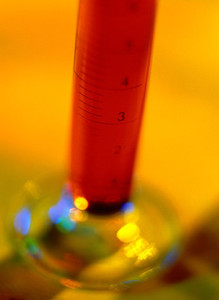A life-threatening complication for patients undergoing chemotherapy is febrile neutropenia, involving a loss of neutrophils (white blood cells) and fever. Granulocyte colony-stimulating factors (G-CSFs) are growth factors which are used to restore neutrophil production.
Treatment with biological medications such as G-CSF can be very costly to governments, healthcare payers and indeed also to patients. Therefore, when a regulatory pathway became available in order to approve biosimilars of these molecules there was obviously significant interest.
Biosimilars, however, unlike generics, are not copies of their biological reference products and can only claim to be similar. This fact has, in some cases, raised concerns regarding the reduced amount of data that is required by the regulatory authorities when approving such medications.
EMA approved its first biosimilar G-CSF (filgrastim) back in 2008. There are currently six biosimilar G-CSFs approved for use in the EU, within the product classes of human growth hormone, granulocyte stimulating factor and erythropoietin, see Table 1; one biosimilar G-CSF was withdrawn in April 2011 [1].
Table 1: G-CSF* biosimilars approved by EMA in Europe
| Name
|
Authorisation date
|
Manufacturer/Company
|
Reference product
|
| Biograstim
|
15 Sep 2008
|
CT Arzneimittel GmbH
|
Neupogen (Amgen)
|
| Filgrastim Hexal
|
6 Feb 2009
|
Hexal AG
|
| Filgrastim ratiopharm
|
15 Sep 2008
Withdrawn 20 Apr 2011
|
Ratiopharm GmbH
|
| Nivestim
|
8 Jun 2010
|
Hospira UK Ltd
|
| Ratiograstim
|
15 Sep 2008
|
Ratiopharm GmbH
|
| Tevagrastim
|
15 Sep 2008
|
Teva Generics GmbH
|
| Zarzio
|
6 Feb 2009
|
Sandoz GmbH
|
| *with filgrastim as active ingredient
|
Amgen’s Neupogen (Filgrastim) is one of the first biological human recombinant G-CSF products to be commercialised and has been the reference drug upon which all biosimilar G-CSFs have been compared. Neupogen lost its patent protection in the EU in 2008 and will lose its patent protection in the US in 2013 [2]. The drug is indicated for use in the treatment of cancer, haematopoietic stem cell transplantation and neutropenia.
All of the G-CSF biosimilars are manufactured in facilities with state-of-the-art technology. All products have passed the regulatory requirements for approval by EMA, which includes phase I and phase III trials, pharmacodynamic and pharmacokinetic evaluations and studies on efficacy and safety. Despite these rigorous comparisons of the biosimilars and the reference product, there are still some concerns regarding their long-term evaluation, in particular, the limited experience at the time of approval of these products in terms of efficacy, safety and immunogenicity [2].
Information on how the biosimilars were evaluated by EMA can be obtained by studying the European Public Assessment Reports (EPARs) for each biosimilar. The article that follows compares the efficacy and safety results reported in the EPAR from the G-CSF biosimilars.
Conflict of interest
The author of the study declared that he has received honoraria from Amgen and from Sandoz for lecturing.
Related article
Comparison of EPARs for G-CSF biosimilars approved in Europe
References
1. GaBI Online - Generics and Biosimilars Initiative. Biosimilars approved in Europe [www.gabionline.net]. Mol, Belgium: Pro Pharma Communications International; [cited 2012 Aug 24]. Available from: www.gabionline.net/Biosimilars/General/Biosimilars-approved-in-Europe
2. Gascon P. Presently available biosimilars in hematology-oncology: G-CSF. Targ Oncol. 2012;7 Suppl 1:S29-34.
3. GaBI Online - Generics and Biosimilars Initiative. Sandoz starts phase III trials for biosimilar filgrastim and pegfilgrastim [www.gabionline.net]. Mol, Belgium: Pro Pharma Communications International; [cited 2012 Aug 24]. Available from: www.gabionline.net/Biosimilars/News/Sandoz-starts-phase-III-trials-for-biosimilar-filgrastim-and-pegfilgrastim
Permission granted to reproduce for personal and educational use only. All other reproduction, copy or reprinting of all or part of any ‘Content’ found on this website is strictly prohibited without the prior consent of the publisher. Contact the publisher to obtain permission before redistributing.








 0
0











Post your comment